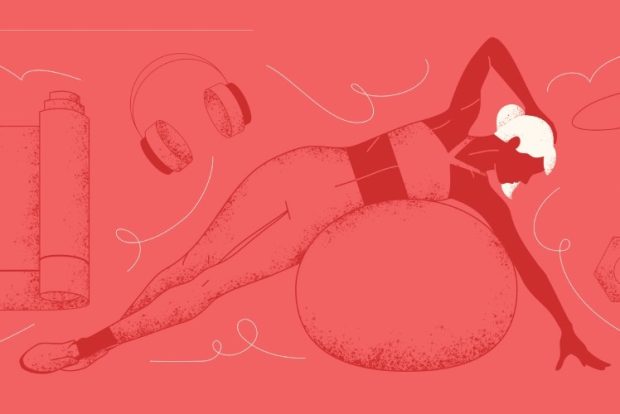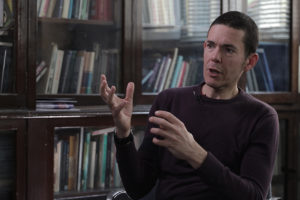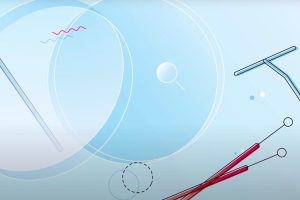Carbon Cycle
Geographer Mathias Disney on carbonate deposits in the ocean, how wildfires release the carbon in the atmosphe...

On June 16, 2015, the Bone journal published a research paper titled “Effectiveness of resistance training or jumping-exercise to increase bone mineral density in men with low bone mass: A 12-month randomized, clinical trial” about the effect of different physical exercises on bone mass. We have asked one of the authors of this research, Assoc. Prof. Pamela S. Hinton from the University of Missouri, to comment on this work.
We conducted a 12-month, randomized clinical trial that compared the effectiveness of resistance training (RT) or jump training (JUMP) to increase bone mineral density (BMD) in physically active men (n=38) with low bone mass of the hip or spine. The participants were non-smokers and did not use medications that might affect bone health. Subjects were randomized to either the RT or JUMP group. All participants received supplemental calcium (1200 mg per day) and vitamin D (10 micrograms per day) for the duration of the study.

The RT intervention consisted of weight-lifting twice per week and was a progressive, periodized program. The JUMP intervention consisted of various jumps and was also progressive and periodized. The exercise training was performed in the Fitness Center in the Exercise Physiology Lab, and all exercise training sessions were supervised by study personnel. Participants rated pain and fatigue following each RT or JUMP training session. BMD was measured at baseline and after 6 and 12 months using dual-energy X-ray absorptiometry (DXA) scans of the whole body (WB), total hip (TH) and lumbar spine (LS). Blood was also collected at these times and serum markers of bone formation and breakdown were measured.
The effects of RT or JUMP on BMD and BTM were evaluated using 3×2 repeated measures ANOVA (time, group). This study was conducted in accordance with the Declaration of Helsinki and was approved by the University of Missouri IRB. WB and LS BMD significantly increased after 6 months of RT or JUMP and this increase was maintained at 12 months; TH BMD increased only in RT. Bone formation, as assessed by a serum marker, increased significantly after 12 months of RT or JUMP. Bone breakdown decreased significantly after 6 months and returned to baseline concentrations at 12 months in both RT and JUMP. Pain and fatigue ratings after RT or JUMP sessions were very low at 0, 6, and 12 months. In conclusion, RT or JUMP, which appeared safe and feasible, increased BMD of the whole body and lumbar spine, while RT also increased hip BMD, in moderately active men with low bone mass.
The motivation for this study was to develop an evidence-based exercise prescription to increase bone mass in men who had already have low bone mass. The current recommendation to perform “weight-bearing exercise” to maintain bone health in adulthood is very vague, and although weight-lifting and activities that involve jump are suggested, there is no specific information on the exercise mode, frequency, or duration needed. Furthermore, the existing literature examining the efficacy of exercise interventions is devoid of studies in men with low bone mass. As a result of our study, we can now provide men a defined weight-lifting or jump training exercise plan that has been proven to increase bone mass. In addition to being safe and effective, the resistance training and jump training programs require minimal equipment and time, making them feasible.
Our recent work spans multiple fields, including the area of bone research and the “Exercise is Medicine” perspective on global health issues. In the bone field, there is an emergent interest in the interaction between bone and skeletal muscle. Historically, these tissues have been studied in isolation, but recently scientists in both the bone and skeletal muscle worlds have recognized the significance of tissue cross-talk in optimal physiologic function of both organ systems. Understanding this interrelationship is needed to identify the mechanisms by which exercise positively affects bone health. The movement to integrate physical activity into healthcare prevention and treatment is growing worldwide. This study is an example of an evidence-based physical activity program that could be prescribed by a health care provider and implemented in the community. Physical activity is an attractive alternative to pharmacologic treatments, which often have negative side effects and for which the health consequences of long-term use are unknown. In contrast, the “side effects” of physical activity are improved muscle strength and balance, which translate to fall reduction and lower fracture risk as well as metabolic and cardiovascular benefits.

Geographer Mathias Disney on carbonate deposits in the ocean, how wildfires release the carbon in the atmosphe...

Scientists have assessed the contribution of humans as a species to the history of life on Earth

Biologists have imaged ultra-small bacteria that are close to the lowest size limit possible for life on Earth